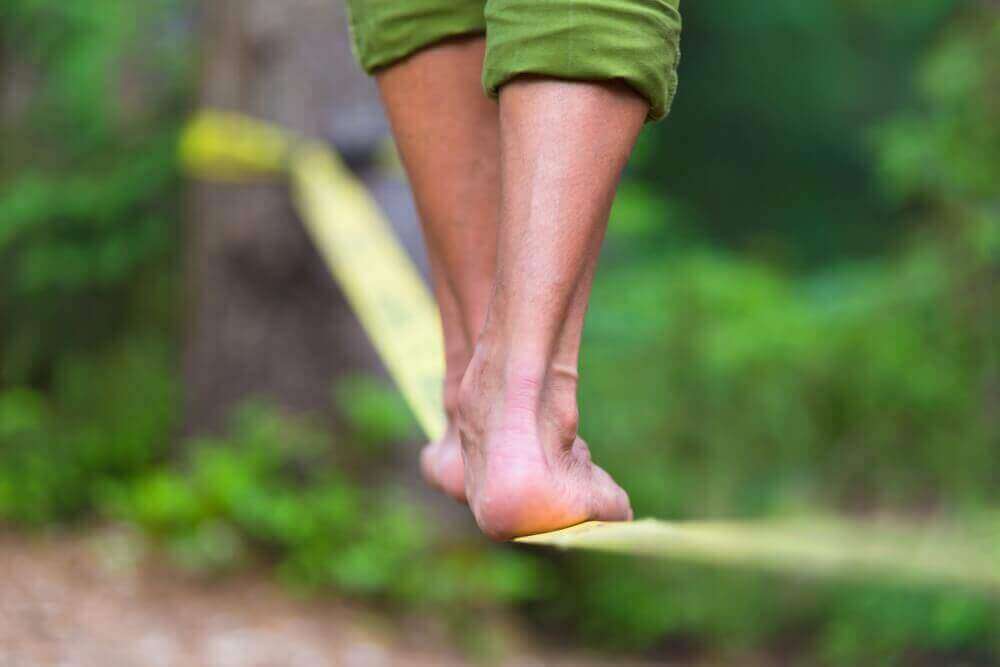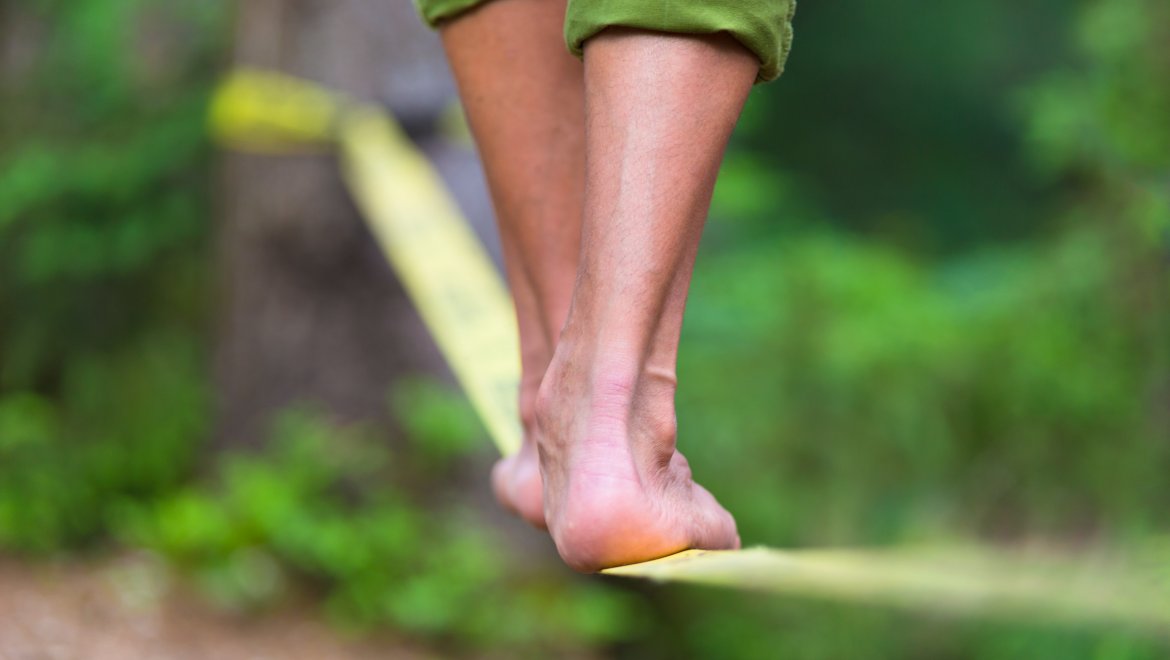Kde se skrývá příčina bolestí Achillovy šlachy?
Bolesti Achillovy šlachy jsou často palčivým problémem běžců, který brání plnohodnotnému tréninku. Tyto potíže se mohou vyvíjet postupně nebo se objeví náhle po větším tréninku nebo nevhodném prudkém pohybu. Problém v Achillově šlaše se často vyvíjí dlouhodobě, ještě dávno předtím, než začneme pociťovat bolest. Bylo dokázáno, že ruptury šlach vznikají většinou na podkladě pokročilých degenerativních změn. Stejně tak prudký nekoordinovaný pohyb, který vyvolá bolest Achillovy šlachy je často poslední kapkou, kdy bolest do té doby podprahová, se zvýší a my ji začínáme vnímat. Při chronických bolestech Achillovy šlachy se jedná především o degenerativní změny, ne většinou uváděný chronický zánět. Tzv. sterilní zánět může provázet degenerativní změny při akutní mikrotraumatizaci vláken šlachy nebo při přetížení obalů šlachy. V těchto případech se okolo Achillovy šlachy objevuje otok, případně zčervenání a lokální zvýšení teploty.
Nesmíme opomenout ani případy, kdy Achillova šlacha bolí, ale tato bolest nevychází ze samotné šlachy, ale jedná se o bolest tzv. přenesenou. Tato bolest může vycházet z okolních struktur, například z měkkých tkání mezi vlastní Achillovou šlachou a bércovými kostmi. Bolestivá burza u úponu šlachy a kostní výčnělek na patní kosti označovaný jako Haglundova pata se mohou projevovat bolestí šlachy, často ale se ale vyskytují společně s postižením Achillovy šlachy. Bolest může být přenesena i ze samotného tricepsu, tedy lýtkového svalu, kde se mohou vyskytovat místa zvýšeného svalového napětí, tzv. trigger points.
Pokud se jedná o problém přímo v Achillově šlaše, můžeme to poznat těmito příznaky:
- Bolest Achillovy šlachy, v lehčích případech se objevuje jen na počátku zátěže, po ránu, v horším případě se objevuje i po zátěži a v nejtěžším případě je i při běžných denních aktivitách případně i v klidu
- Ztuhlá Achillova šlacha nejčastěji po ránu a při běhu či jen na jeho začátku
- otok Achillovy šlachy, nejčastěji v její střední třetině, které tvoří jakoby prstýnek okolo šlachy, nebo zhrubělý povrch šlachy v určité její části
- palčivá bolest při stisku šlachy, může být jak ve šlachosvalovém přechodu, ve střední třetině šlachy, tak i těsně při úponu na patní kost
- akutní zánět Achillovy šlachy, který může postihnout i okolní tkáně, šlacha je oteklá, teplá, červená a vrže, při nedoléčení přechází v chronický zánět Achillovy šlachy
Bolesti achilovek s úspěchem léčíme.
Achillova šlacha běžců je samozřejmě velmi zatěžovaná. Proč ale tyto potíže mají jen někteří běžci a proč těmito obtížemi trpí i lidé se sedavým způsobem života? Důvod pravděpodobně nebude jen v nadměrném zatížení, tréninkovém povrchu nebo v obuvi.
Moderní fyzioterapie se zabývá funkcí pohybového aparátu. Přesněji prací svalů v souhře, v jejich koordinaci. Právě svalová souhra je rozhodující pro postavení jednotlivých segmentů vůči sobě, tedy pro postavení v kloubu. Ideální postavení v kloubu je takové, kdy dochází k co největšímu rozložení sil. Je to tedy postavení biomechanicky nejvýhodnější z hlediska zatížení pasivních struktur – tedy kloubů, šlach a vazů. V takovém případě mluvíme o funkční centraci kloubu. Pokud není svalová koordinace optimální, tedy kdy určité svaly mají převahu, jsou ve zvýšeném napětí a jiné v útlumu, dochází k nevýhodnému postavení v kloubu. Síly nejsou rovnoměrně rozloženy, některé struktury jsou zatěžovány nadměrně, a dochází tedy k vzniku bolestivého dráždění a k jejich předčasné degeneraci. K poruše svalové koordinace může dojít různými vlivy, může se tak stát například následkem úrazu, jednostranné nadměrné zátěže nebo se tato koordinace nevyvinula dobře už v raném dětství.
Tímto způsobem můžeme chápat vznik mnohých bolestivých obtíží pohybového aparátu. Tedy i bolesti a degenerativních změn Achillovy šlachy. Určité funkční poruchy pohybového aparátu vedou k zvýšenému nebo nerovnoměrnému zatížení Achillovy šlachy a tím ji predisponují k traumatizaci a rozvoji degenerativních změn. Rozsah těchto změn a obtíží je pak dán pravděpodobně tíží funkční poruchy a dalšími vlivy, jako je druh prováděné fyzické aktivity, používaná obuv, věk, hormonální změny apod. To je i odpověď na otázku, proč se bolestivé stavy Achillovy šlachy týkají jen někoho. Porucha pohybových stereotypů způsobuje jen malé silové změny v zatížení, například právě určité části nebo celé Achillovy šlachy, ve srovnání se silami, které působí na šlachu například při sprintu, výskocích, nebo vytrvalostním běhu, ale jejich obrovský význam spočívá právě v jejich neustálém působení.
Dle pilotní studie na skupině pacientů, převážně běžců, jsme zjistili, že jedincům s bolestivou Achillovou šlachou je společná víceméně podobná porucha svalové koordinace, která se týká celého těla. Terapií této tzv. funkční poruchy, došlo v poměrně brzké době ke snížení obtíží až k jejich úplnému vymizení. Je důležité poznamenat, že tímto způsobem se léčí přímo příčina obtíží, nejedná se tedy o terapii zmírňující pouze příznaky, jako jsou postupy zaměřené lokálně jen na Achillovu šlachu a tím pádem jsou výsledky terapie dlouhodobé. Pokud budeme léčit pouze příznaky, tedy bolest, otok, protahovat lýtkový sval a Achillovu šlachu, aplikovat ultrazvuk, laser, rázovou vlnu, možná tyto příznaky na nějaký čas odezní, ale můžeme si být jisti, že se objeví znovu. Příčina totiž zůstává skryta v pohybovém aparátu.
Mgr. Dagmar Lisá (Mostecká)


